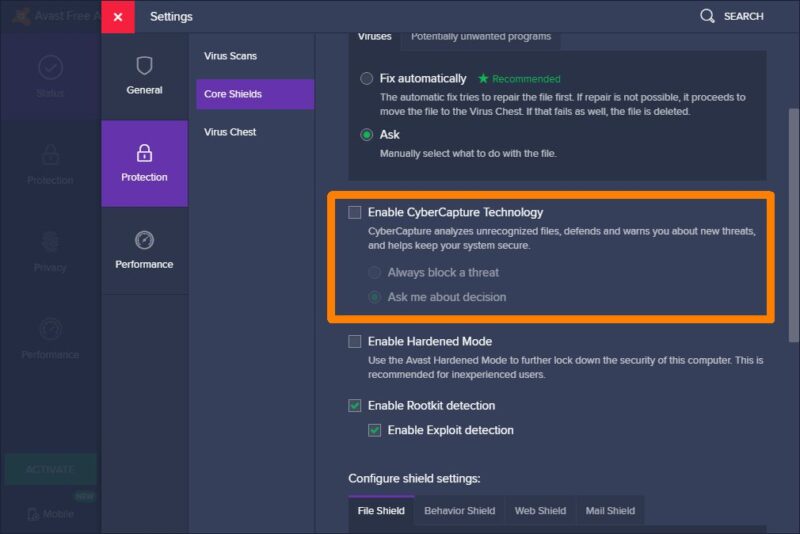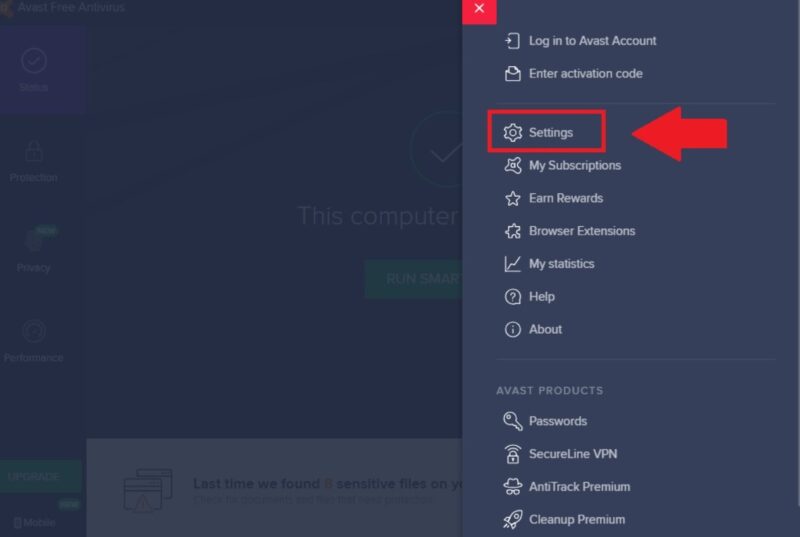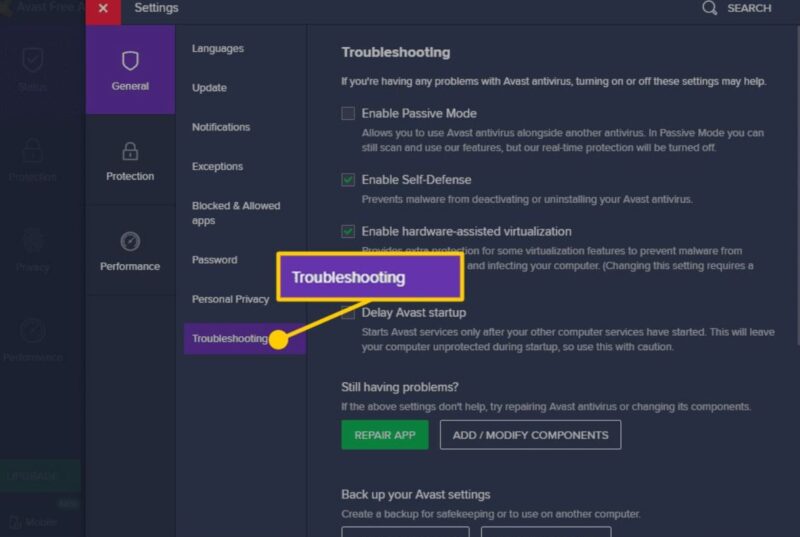This article will show you how to turn off Avast antivirus in Windows 10.
The how to disable avast free antivirus in windows 10 is a short guide that explains how to turn off the Avast Antivirus in Windows 10.
To safeguard our computers from internet dangers, malware, and viruses, we all need trustworthy antivirus software like Avast or AVG. Antivirus software may help you protect your PCs, but it can also prevent you from installing some programs. It may be useful to know how to temporarily disable Avast on Windows 10 in order to install apps that have been banned by it.
Once the antivirus has been deactivated, you may visit the banned website and install the apps. However, always visit safe websites and download apps/software from reputable sources; otherwise, your computer may get infected with malware. Instead of removing Avast, you may repair it if it won’t open on Windows 10. If you don’t want to use this antivirus, you should remove it rather than disable it.
In Windows 10, how do you turn off Avast?
When installing a firewall software, the antivirus solution may often cause problems. However, you may temporarily deactivate Avast antivirus software from your computer in two methods. You may switch off Avast using any of the methods listed below.
1. Using the System Tray
Avast’s symbol will appear in the system tray or taskbar after installation. This Avast icon enables you to start the program and make small adjustments.
To reach the system tray, click the upward arrow on the taskbar. Next, choose Avast shields control from the right-click menu on the Avast antivirus icon (orange splash with an A on it).
You must choose a time when you wish to disable Avast antivirus protection. It may be turned off for 10 minutes, an hour, till the machine resets, or forever
When you choose a time, all shields will be deactivated for that amount of time. If you’re not sure how long the shields will last, we suggest deactivating them permanently and then enabling them as needed.
A confirmation pop-up will appear; click OK, STOP to approve the disable request.
2. Using Avast’s Preferences

You may deactivate specific shields in Avast to ensure that other system protection is not hindered. Disabling one or two shields also does not put the whole system at danger. Avast offers four distinct types of shielding.
- File Shield – Scan newly added and opened files on the computer.
- Behavior Shield – Checks application behavior and monitors applications for questionable activities to alert users.
- Web Shield — Protects against web-based assaults as well as untrustworthy downloads.
- Mail Shield – Prevents hazardous email attachments from being downloaded.
You may now deactivate the Avast shield according to your needs. For example, if Avast is stopping you from accessing a file, you must deactivate File Shield, and you must disable Web Shield if you wish to visit a website that Avast has banned.
By clicking the Avast icon in your system tray, you may start the program. Alternatively, you may use the Start menu’s search box to find Avast and launch it from there.
Go to the Protection area of the Avast user interface and choose Core Shields.
Toggle the switch underneath the shield you want to turn off.
Choose how long the chosen shield should be deactivated for.
You may also deactivate several shields individually. A pop-up will appear asking whether you’re sure you want to discontinue File Shiel. To turn it off, press the OK, STOP button.
The shields are now deactivated, so you may do anything you want without the antivirus software stopping or blocking you.
How to Uninstall Avast
You cannot immediately terminate Avast using Task Manager. This is required to prevent malware and viruses from destroying Avast processes and infiltrating your system.
Before terminating the Avast Antivirus process in Task Manager, certain Avast parameters must be changed. But first, let’s look at how to fully disable Avast.
Step 1: Open the Avast app and choose Menu from the upper right corner of the screen.
Step 2: Select the Settings option from the drop-down menu
Step 3: From the far left pane, make sure you’re in the General area. Uncheck the checkbox next to Enable Self-Defense in the Troubleshooting section.
You may now stop Avast Antivirus from Task Manager thanks to this configuration adjustment.
Step 4: To open the Task Manager, close the Avast Security program and simultaneously hit Ctrl + Shift + Esc.
Step 5: Make sure you’re on the Processes tab in the Task Manager window. Right-click on Avast Antivirus after searching for it. From the context menu, choose End Task
Step 6: Repeat steps 5 and 6 for any processes containing the term Avast.
Avast is no longer active, and you won’t see it on the taskbar or system tray of your computer. When your antivirus is turned off, make sure your computer does not come into touch with any viruses, malware, or threats; otherwise, serious harm may occur.
Avast Notifications: How to Turn Them Off
When you’re working on something important, the alerts may be annoying. When you connect and disconnect a USB drive from your computer to transfer data, Avast will remind you to scan the disk. Receiving Avast popups 10 times a day may get irritating. So, the easiest method to understand and learn how to switch off Avast is to read this article.
On your computer, open the Avast program and choose Menu from the user interface.
Then, from the Menu, choose the Settings option.
To access the Notifications area, go to the General tab and choose Notifications. Check the box next to ‘Use quiet mode to disable all pop-ups, notifications, and messages.
Avast will no longer send you notifications or alerts. When you’re at a conference or presenting your screen, it may be useful, but you’ll miss any important cautions or alarms if there are any. As a result, after you’ve completed the activity that needs disabled notifications, be sure to reactivate them as quickly as possible.
How Do I Turn Off HTTPS Scanning?
If Avast is preventing you from accessing a secure website, you may turn off HTTPS scanning. When the web shield is turned off, the issue may also occur. To stop HTTPS scanning in Avast, follow the full steps below.
Go to Menu Settings in the Avast Antivirus application on your computer.
Go to the Protection tab under Settings, then to Core Shields. Scroll down to the Configure shield settings section and choose Web Shield.
Next, uncheck the Enable HTTPS scanning option.
You may now go to any website you choose. However, be cautious while visiting the sites since your machine may be infected with spyware or viruses.
How to Turn Off Avast at Startup

When many applications and programs start up at the same time, the computer may slow down. To prevent such problems, learn how to disable Avast upon startup.
To prevent Avast from starting, you must deactivate self-defense. Steps 1 through 3 of How to Close Avast may be helpful.
To launch Task Manager after disabling self-defense, press Ctrl + Shift + Esc at the same time.
If you don’t see any information in Task Manager, go to the bottom and select More Details. Go to the Startup tab now.
In the Startup tab, right-click on the Avast AvLaunch component and choose Disable from the context menu.
Avast will no longer launch on its own when you boot up your computer.
How to Remove Avast from Windows 10
If you don’t intend to use Avast for a long time, you may remove it instead of learning how to turn it off in Windows 10. Simply turning off Avast antivirus will use up your memory and CPU since certain programs will continue to operate in the background.
To remove Avast, you must deactivate self-defense. To deactivate self defense, follow the steps 1 through 3 in the ‘How to Close Avast’ section.
Avast cannot be uninstalled without first deactivating self-defense. However, after you’ve completed the requirements, you may begin the process of removing it.
Look for the Control Panel in the search results and open it. Then click Uninstall an application in the Control Panel box.
Search for Avast Free Antivirus in the next window and right-click it. From the context menu, choose Uninstall. You may also double-click the Avast Antivirus icon in the Control Panel window
To uninstall Avast from your computer, open the Avast window and click Uninstall.
Avast Secure Browser may also be uninstalled. Avast Uninstall Utility is also available to assist you in removing this antivirus protection. So now you know how to remove Avast and turn it off.
Conclusion
Malware removal software can assist you in keeping your computer safe from cyber threats, malware, and viruses. To guarantee your safety and privacy are not compromised, you must use a trustworthy and secure antivirus software like Avast. Avast may sometimes block you from accessing certain files, installing apps, or viewing webpages in your browser. If you know how to turn off Avast, you may temporarily deactivate it and get the job done in these situations.
There are two methods for disabling Avast; you may use either one based on your needs. You may also prevent your system from slowing down by disabling Avast from the start-up menu. If you want to turn off Avast on your Mac, go to their official website for instructions.
The how to turn off avast on mac is a question that has been asked many times before. Avast Antivirus turns off in Windows 10 by default, but you can turn it back on if you need it.
Frequently Asked Questions
How do I disable Avast Antivirus?
To disable Avast Antivirus, you must first close the program. Then, follow these steps to find and delete the offending file: 1) In Windows Explorer, go to C:\Program Files\Avast Software\Avast\Setup\gui\avgnt.exe 2) Right-click on avgnt.exe and select Properties from the drop-down menu 3) Select Uninstall from the General tab 4) Click Yes when asked if you want to uninstall this program 5) Delete the avgnt.exe file
How do I disable my antivirus on Windows 10?
To disable your antivirus on Windows 10, press the windows key and type antivirus in the search bar. This will bring up a window with all of your antivirus programs listed. Right click on each one and select disable.


